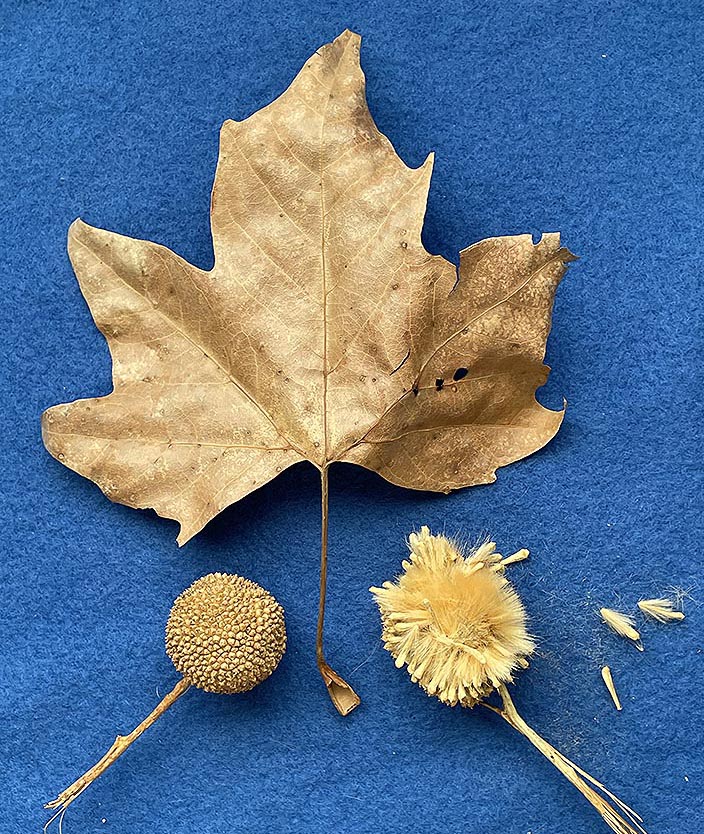For decades, every fall/winter, my front yard in northern Los Angeles County, southern California, has been the collection site for copious quantities of wind-blow leaves. They emanate from a row of trees were planted forty years ago, by the city, on both sides of a street one block east of my house. Of course, most of the leaves do not just simply blow down the street. Instead, they blow south for one block along the street, then they turn 90 degrees and blow west, where they accumulate in huge piles along every “nook and cranky” in my front yard.
This year, I decided that I would try to identify the genus/species of the trees from which the above-mentioned leaves are derived. This should have been a straight-forward exercise, right? At least, that is what I originally thought. But, as usual, identification of living species can be tricky! Initially, I used pocket “field guides,” but they did not have conclusive illustrations, nor detailed descriptions, that would positively “nail down” the species identification. I had to turn to the internet, and that, too was tricky (almost too much data). Eventually, I came to the inescapable conclusion that leaves were derived from mature California Sycamore trees, namely, Platanus racemosa. Its classification is:
Kingdom Plantae
(Clade) Angiosperms
Order Proteales
Family Platanaceae
Genus Platanus
Species. P. racemosa
[Common name: California sycamore]
Sycamore trees are native to North America. Platanus racemosa lives in southern and central California and, to a lesser degree, as far north as Tehama and Humbolt counties of northern California. They can also be found in Baja California, Mexico.
Note: There are two other species of Platanus found in the United States and surrounding areas (i.e. Platanus wrightii = Arizona sycamore and Plantanus occidentalis = American” sycamore). Sycamores are also are found also in Mexico and Canada.
Geologic Record of Sycamore Trees: The fossil record of sycamores dates back to about 100 million years, to the Cretaceous Period,
Some Shared Characteristics of sycamore trees:
Mature trees can be up to 110 feet tall (35 m) and up to 3 feet (1 m) in diameter. They can live for up to 600 years.
Sycamore leaves are palmate, thus they are shaped like a human hand. These leaves can be very wide (up to about 10 inches).
The leafstalk if hollow (this can be readily seen if you turn the leaf upside-down.
The tree bark peels readily, producing an attractive white, grayish white mottled pattern.
Their fruit consists of “ping-pong” sized balls (achenes), with the seeds in the “furry” interiors of the achenes. The number of achenes) ranges from one to four on a single stem.
The color of achenes ranges from brown, yellow, yellowish green, or reddish.
The wood of the tree trunk is hard and does not readily split (therefore is used for butcher blocks).
REFERENCES CONSULTED:
Wikipedia (2025)
Zim, H.S., A.C. Masrtin, and D. and S. Barlowe. 1956. A Golden Nature Guide. New York. 160 pp.





No comments:
Post a Comment